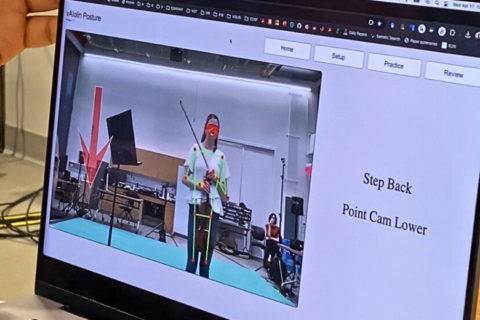Gov. Wes Moore is formally asking for a federal fishery disaster declaration to help manage the invasive blue catfish, flathead catfish and snakeheads that have flourished in Maryland while threatening native species.
Betsy Nicolas, vice president of programs for Potomac River Keeper Network, told WTOP that blue catfish in particular are having a negative impact on Maryland’s native fish species, including the iconic blue crabs.
“They find them delicious, just like many of us do,” she told WTOP’s Kate Ryan in an interview.
“They’re bottom feeders, so they’re hunting in the same areas where we have oysters growing, where we have our baby blue crabs, and so many of the important species for the Maryland seafood industry,” Nicolas says.
In addition to blue crabs, the catfish also prey on striped bass.
In 2022, the Chesapeake Bay Foundation reported the lowest amount of crabs in the bay since surveying began in 1990. The survey is compiled annually by the Virginia Marine Resources Commission and the Maryland Department of Natural Resources. At the same time, striped bass reproduction has been well below average for four consecutive years as the population in the bay continues to shrink.
Virginia and Maryland have enacted stricter limits on how many striped bass and blue crabs can be caught recreationally and commercially, but Maryland Department of Natural Resources Secretary Josh Kurtz believes this new crisis could limit the impact of those fishery regulations.
“The impact of invasive species cannot be underestimated, nor can we delay action to address the damage they are causing,” Kurtz said in a news release on Thursday.
There’s no direct scientific link between the growing invasive species population and the decreasing population of native fish. But blue catfish have managed to expand into nearly every Chesapeake Bay tributary and dominate the areas where they are established.
According to the Chesapeake Bay Foundation, they take up approximately 75% of the total weight of all fish inhabiting the rivers they live in.
“Since they are not native to the area, there are no natural predators for them, which is how they can just keep growing. We don’t have things big enough in our waters, in our rivers and streams to eat those big blue cats,” Nichols says. “We really have to capture them and harvest them ourselves to get them out of the water.”
If the U.S. Department of Commerce does find that Maryland is experiencing a “fishery disaster,” the state would qualify for federal funding.
That funding could go toward better monitoring and targeting of invasive species. This could also help promote the fishing and selling of catfish more widely.
“Right now what we have is difficulty with any kind of processing of them so they can be sold in, for example, restaurants,” Nicolas explained. “There’s a hang up in that process that we need to get fixed. And hopefully, the governor’s declaration is really going to help push those sorts of steps forward.”
For now, it’s up to local residents to eat these invasive species, and Nicolas has a tip for that, too.
“I personally would go for blue cats because the snakeheads have a lot more bones, but they’re both pretty delicious,” she says.
If you’re a local angler, remember there are no limits on catching invasive fish — at any size during any time of year. So get fishing!
Editor’s Note: An earlier version of this story incorrectly identified the organizations that survey crabs in the Chesapeake Bay. The work is done by the Virginia Marine Resources Commission and the Maryland Department of Natural Resources. The story has been corrected and updated.








